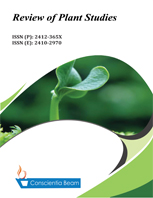Morpho-sensory evaluation of orange fleshed sweet potato (Ipomoea batatas L.) Varieties in the low lands of North Shewa zone
DOI:
https://doi.org/10.18488/rps.v10i1.3588Abstract
Though Sweet potato (Ipomoea batatas L.) is one of the internationally as well as nationally important root crops its production is challenged with various bottlenecks. Lack of planting materials, shortage of farmer preferred varieties, poor extension system among many other constraints. This study was conducted to assess the performance and test of different orange fleshed sweet potato varieties in participatory approach in the lowlands of North shewa. Evaluation of eight varieties was carried out in main cropping season using a Randomized Complete Block Design with three replications. Number of roots per plant, root weight per plant, root length, root diameter, marketable and total root yield were measured and analyzed using the generalized linear model procedure with SAS statistical software version 9.1. Moreover, farmers’ perception assessment and sensory analysis which had an important constituency in the selection process were done using pairwise matrix and hedonic scale, respectively. Except root length, all the traits showed significant difference between varieties. Variety Kulfo gave the highest root yield (38.8 tha-1) and root diameter (98.8 mm); whereas the lowest root yield (22.1 tha-1) and root diameter (64.5 mm) were recorded from varieties Teo jet and Delvia, respectively. Farmers were also selecting varieties Lords, Cicilia and Birtukane. Panelists selected Bela, Birtukane and Kulfo as the best varieties. Hence, varieties Kulfo, Lords and Birtukane were recommended for further popularization to boost the production and productivity of the crop for production the lowlands of north shewa and other similar agro-ecologies.

